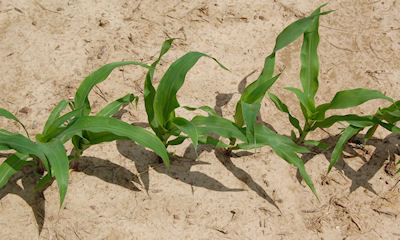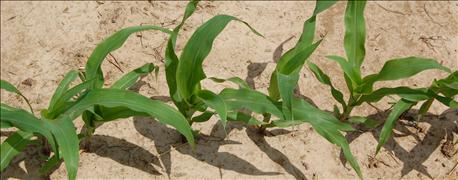May 8, 2015

By Mike Gray
Editor's note: This article originally appeared in the University of Illinois' The Bulletin. For the complete version, click here. Gray is an entomologist with U of I.
On January 28, 2015, the US EPA published a "proposed framework to prevent corn rootworm resistance."
Public comments were sought across an original 45-day period that was extended 30 days beyond the original March 16, 2015 deadline. Within the proposal, the United State EPA acknowledges that corn rootworms have already developed resistance to "Bt corn" in some areas of Iowa and Illinois.

Using a soil insecticide alongside corn rootworm traits is not advised
US EPA has characterized some states within the Corn Belt as in the "red zone" and these include Iowa, Illinois, Nebraska, western Indiana, southwestern Wisconsin, southern Minnesota, and eastern South Dakota. The so-called "red zone" states are described by the US EPA as follows: "where corn rootworm infestations are common and the use of Bt corn is high, …" The Agency's proposal also adds that producers may be part of the "red zone" if the following circumstances are met: 1) "corn-on-corn for multiple years", 2) "heavy use of Bt corn", 3) "regular corn rootworm infestations", and 4) "spotty compliance with current refuge requirements."
As part of the US EPA's proposed framework they offer the following proposal: "In areas at risk for corn rootworm resistance, to require crop rotation, use of corn varieties containing more than one Bt protein, or other integrated pest management (IPM) strategies and stewardship for corn rootworm." Additionally, the US EPA proposes the following: "70% of corn acres in the "red zone" should take part in IPM efforts and that 50% of corn acres in non-"red zone" areas should participate in IPM efforts." From my perspective, isn't this setting the bar a bit low? Why not propose that some form of IPM be put in place on 100% of corn acres regardless of zone characterization?
In reaction to this US EPA proposal, not surprisingly, numerous comments have been received and published including a letter that I signed along with 14 other entomologists from 12 prominent institutions. I encourage you to review these comments from many individuals and organizations. As you will see, there are many different perspectives and opinions taken on this controversial proposal.
~~~PAGE_BREAK_HERE~~~
Among the many concerns raised by the proposal are those that involve the use of a planting-time soil insecticide with Bt hybrids. Let me be clear — planting-time soil insecticides should be considered an important arrow in the IPM quiver targeted at the corn rootworm complex. However, the addition of a planting-time soil insecticide along with a corn rootworm Bt hybrid is not a good resistance management strategy. The authors of two recently published journal articles have confirmed that use of a planting-time soil insecticide with a rootworm Bt hybrid delays emergence and increases the chances of non-random mating (promotes assortative mating); thereby, hastening the onset of resistance to Bt proteins.
Planting-time soil insecticides will remain an important tool targeted at the secondary insect complex when present at economically threatening levels. They also represent an important option when used with non-Bt hybrids in fields with corn rootworm infestations. When a planting-time soil insecticide is used with a pyramided Bt rootworm hybrid for the sole purpose of rootworm protection, it's hard to find any convincing argument that this is a good IPM or resistance management (IRM) approach.
Resistance by many pests, including corn rootworms, has occurred when we have used the same arrow over and over again and failed to integrate management tactics. Since 2003, the year in which Bt rootworm hybrids were commercialized, growers have increasingly failed to integrate tactics and have relied upon a narrow set of Bt rootworm proteins expressed at low levels within a refuge system designed for high-dose events targeted at European corn borers. We should not have been surprised when reports of western corn rootworm resistance to Bt corn began to occur in Iowa soon followed by Illinois.
Finally, while I am supportive of crop rotation as a viable pest management tactic for corn rootworms in many areas of the Corn Belt, growers in east central and northeastern counties of Illinois recognize that a segment of the western corn rootworm population in those areas is now resistant to two Bt proteins (Cry3Bb1 and mCry3A) as well as crop rotation. Rotation, even in those Illinois counties, remains a good strategy; however, other tactics will need to be more fully integrated into a long-term corn rootworm management program.
You May Also Like




